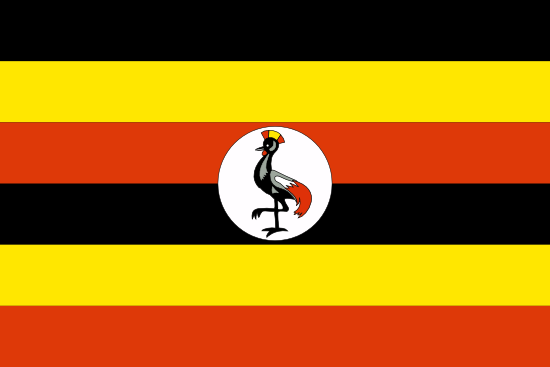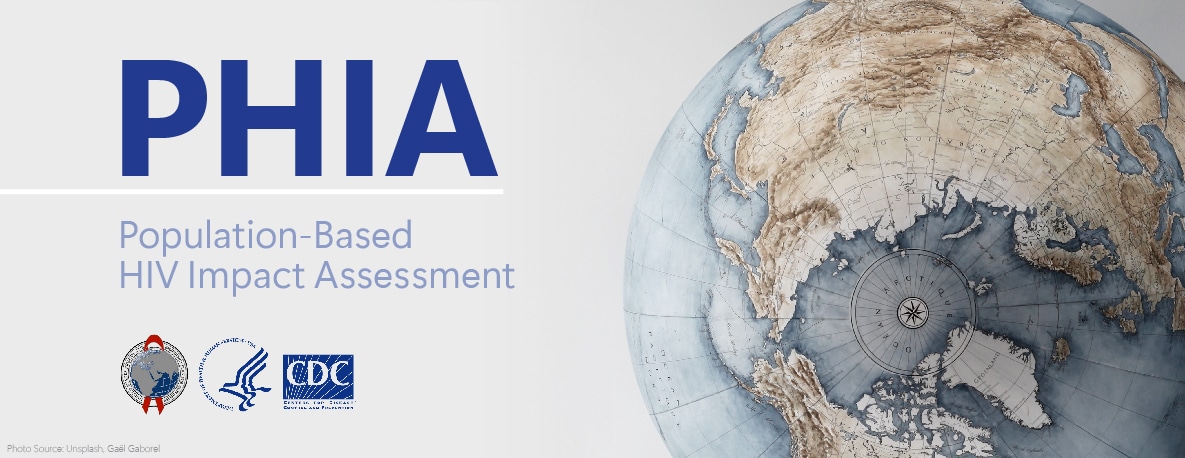Uganda Country Profile

Uganda Country Profile
Discover more about CDC’s work in Uganda by viewing our detailed country profile
Country Overview
While its work in Uganda dates to 1991, CDC formally established its office there in 2000 and continues to work with the Ministry of Health to provide high-quality HIV prevention and treatment services. Providing both funding and technical assistance, CDC employs a service-delivery model integrated with national, regional, and district structures within Uganda to build the capacity of its public health system to respond to HIV and tuberculosis (TB). CDC supports Uganda’s efforts to find more persons living with HIV, expand antiretroviral treatment (ART) to all persons living with HIV in Uganda immediately upon diagnosis, and scale-up viral load testing. In addition, CDC supports the integration of TB services into existing prevention of mother-to-child transmission of HIV and ART services, TB preventive treatment, HIV testing, and linkage to ART for TB/HIV co-infected clients.
Per Capita GNI
$930
(2022)
Population (million)
47.24
(2022)
Under 5 Mortality
42.1/1,000 Live Births
(2021)
Life Expectancy
62.7 Years
(2021)
Estimated HIV Prevalence
5.1%
(Ages 15-49): (2022)
Estimated AIDS Deaths
14,000
(Age≥15) (2022)
TB Treatment Success Rate
85%
(2020)
Estimated TB Incidence
199/100,000
(2021)
Estimated Orphans Due to AIDS
660,000
(2022)
TB patients with known HIV-status who are HIV-positive
32%
(2021)
Reported Number Receiving Antiretroviral Therapy (ART)
1,153,135
(Age≥15) (2022)
Strategic Focus
The Centers for Disease Control and Prevention (CDC) works with the Uganda Ministry of Health (MoH) and other stakeholders to provide high-quality HIV prevention, and treatment services through the U.S. President’s Emergency Plan for AIDS Relief (PEPFAR). CDC provides technical assistance, uses a service-delivery model integrated with national, regional and district structures to build capacity of the heavily burdened public health system to respond to HIV and tuberculosis (TB).
Strengthening National Public Health Systems: With a focus on a uniformly coordinated, nationally owned laboratory network that effectively responds to the country’s diagnostic needs, CDC supports infrastructure development and equipment maintenance to ensure uninterrupted service delivery. CDC also supports public health workforce development and staffing; procurement and supply chain strengthening to improve access to HIV/AIDS medicines and related commodities across the country through private not-for-profit facilities; information and management systems; monitoring and evaluation; operations research; and other health priorities.
Supporting HIV epidemic control efforts: As one of 13 PEPFAR countries selected for the Accelerating HIV/AIDS Epidemic Control (2017-2020) Strategy, CDC supports Uganda’s efforts to find more persons living with HIV by testing those most at risk; expanding Antiretroviral treatment (ART) offer to all HIV-positive Ugandans immediately upon diagnosis ─ irrespective of disease staging or CD4 cell count; and scaling up viral load (VL) testing to monitor for HIV suppression. CDC also supports reduction of new HIV infections through the Prevention of Mother to Child HIV Transmission (PMTCT) program, the PEPFAR Determined Resilient Empowered AIDS-free Mentored Safe (DREAMS) program, roll out of pre-exposure prophylaxis (PrEP), stronger key population programs, and Voluntary Medical Male Circumcision (VMMC).
Strengthening TB and HIV integrated services: CDC supports TB diagnosis including Multi-Drug Resistant (MDR) TB, through systematic TB screening for clients attending HIV clinics, increased access to and utilization of GeneXpert MTB/RIF, strengthening of the sample referral system, and quality assurance for TB diagnostics. A greater focus on pediatric TB diagnosis has improved case-finding as well as treatment. In addition, CDC supports the integration of TB services into existing PMTCT/ART services, TB preventive treatment (TPT), HIV testing, and linkage to HIV ART for TB/HIV co-infected clients.
Key Activities and Accomplishments
HIV Prevention: CDC is employing successful models to improve access to HIV and TB services for key and priority populations amidst an improved, enabling policy and legal environment. Additionally, CDC continues to support a strong PMTCT program and to measure efforts towards elimination through a national impact evaluation and the largest VMMC program in the world.
HIV Treatment: CDC supports HIV treatment in Uganda by providing ART for HIV positive individuals and promoting adherence to increase the number of HIV positive individuals who are virally suppressed. CDC works to ensure adoption of optimized ART regimens for adults and children CDC links participants to available household economic strengthening and education programs to support HIV infected and affected orphans, vulnerable children, and their families.
Human Resources for Health: CDC supports national health workforce development through direct staff recruitment and on-site mentorship.
TB/HIV Services: CDC provides ART to over half of the TB/HIV co-infected clients supported by PEPFAR. CDC also supports TB preventive treatment (TPT) scale up and use of better diagnostic tests, including GeneXpert MTB/RIF and Urine LAM. CDC is also working with other partners on improving contact tracing with hopes to integrate TB and HIV screening, diagnosis, and treatment where possible.
Laboratory systems strengthening: CDC supported construction of the Uganda National Health Laboratory Services (UNHLS) ─ for centralized testing for HIV-VL and monitoring quality of diagnostic services ─ including supporting the Early Infant Diagnosis-VL lab to attain international accreditation through South African National Accreditation System (SANAS), thus ensuring accurate and reliable results. Additionally, UNHLS developed an e-results download module and implemented it in the 100 hub labs which has ensured real-time download of results for proper patient management.

Tracking PEPFAR Impact Toward Global Targets
The U.S. Centers for Disease Control and Prevention (CDC) works with partners including host countries, local implementing partners, faith-based organizations, and other community-based organizations to measure progress towards HIV epidemic control in countries supported by the U.S. President’s Emergency Plan for AIDS Relief (PEPFAR).

Uganda Refugee Survey Shows Low Prevalence of HIV and Strong Progress Towards Controlling the HIV Epidemic
Newly released data from the Uganda Refugee Population-based HIV Impact Assessment (RUPHIA) survey show a low (1.5 percent) prevalence of HIV among adults aged 15 years and older living in Ugandan refugee settlements.

Uganda Significantly Reduces Rates of Mother-to-child Transmission of HIV With CDC Support
A recent report by the Uganda Ministry of Health shows a significant reduction in the rates of mother-to-child transmission of HIV in the country from over 20 percent in 2000 to 2.8 percent in 2021. With support from the U.S. President’s Emergency Plan for AIDS Relief (PEPFAR), CDC has supported Ugandan mothers since 2003 to decrease rates of HIV transmission to their children.